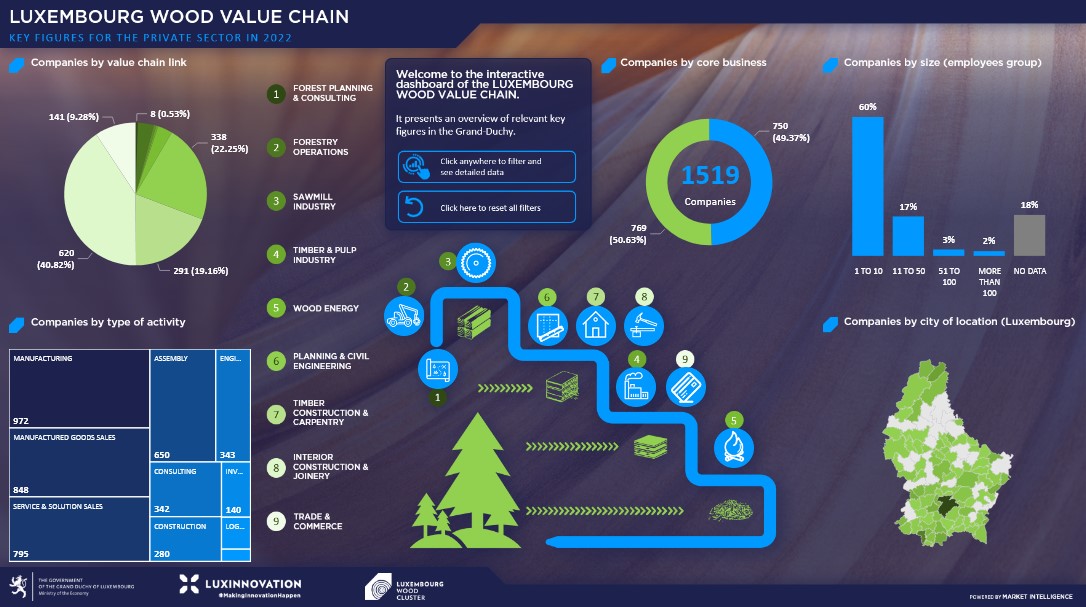


The new Luxembourg wood ecosystem mapping by Luxinnovation shows an increase in the number of companies. It also reveals that almost 20% of wood businesses were incorporated in the last four years.
 Lena Mårtensson
Lena Mårtensson
The new edition of the mapping, which was first presented at the 2023 Luxembourg Wood Cluster Forum, covers the entire Luxembourg wood value chain spanning from forest planning and forestry operations to interior construction and trade and commerce. The mapping shows that the country is home to over 1,500 companies, of which half have wood business as their main activity. The parts of the value chain with the highest number of companies are interior construction and joinery (41% of all companies), planning and civil engineering (22%) and timber construction and carpentry (19%).
“The number of companies has increased by 234 compared to the previous mapping that we produced in 2019,” says Mohamed Toumi, Senior Market Intelligence Analyst at Luxinnovation. “Over 60% of the dynamic Luxembourg wood value chain is made up of small businesses with up to 10 employees. 225 of the identified companies were incorporated between 2019 and 2022.”

One reason for the creation of new companies is Luxembourg’s commitment to innovation. “A lot of Belgian and German companies decide to set up subsidiaries here in order to conduct R&D activities aimed at developing new products for the European market,” explains Ralf Köhler, Cluster Manager – Wood at Luxinnovation. “Many of the newcomers are big groups that are attracted by international business opportunities stemming from our inter-regional approach, the support offered to help foreign companies grow their business from Luxembourg and the support provided by the Luxembourg Wood Cluster. At the same time, quite a few of the new businesses are spin-offs, originating for example from projects conducted jointly by two companies that end up creating a new structure to market the product or service they have developed together.”
A lot of Belgian and German companies decide to set up subsidiaries here in order to conduct R&D activities aimed at developing new products for the European market.
According to Mr Toumi, most of these new companies target the construction industry and wholesale trade of building materials, and offer solutions in the fields of interior construction, planning and civil engineering, and timber construction. The new firms also include trade and commerce businesses. “The supplier market for the construction sector is very dynamic and attractive,” confirms Mr Köhler.
This evolution reflects the renewal of the wood market in Luxembourg and its surrounding region, where an increasing proportion of the wood resource is processed and used locally. Much of the demand comes from the construction sector. “The increasing use of wood as a main construction material has created a new market here in Luxembourg that brings in new companies,” says Mr Toumi.
The increasing use of wood as a main construction material has created a new market here in Luxembourg that brings in new companies.
Mr Köhler explains that building projects frequently aim to use local materials when possible. “There is also considerable innovation in circular building design. Luxembourg research centres conduct projects in fields such as composite materials made of wood and other constituents that enhance the performance.”
The result is a renewed interest in the Luxembourg market, also among companies that have been here for long time. “I recently spoke to the director of a large wood company that over the past years has had its focus on the larger European market,” recalls Mr Köhler. “Acknowledging the potential here, the business now wants to return and start to do business locally again.”